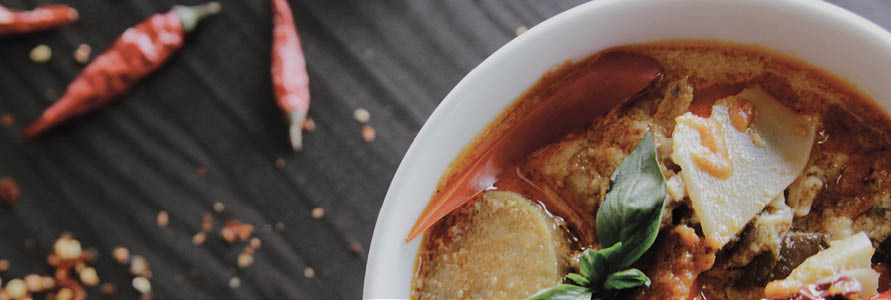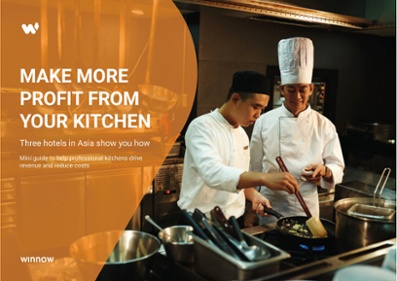Buffets are beautiful. You are tempted in by the abundant display of food in every shape and colour, your mouth waters at the aromas, and you cannot resist the prospect of trying a bit of everything.
This is all highly appealing to guests, but buffets are also one of the top generators of food waste in Asia’s hospitality industry.
To maintain the beauty and freshness and to prevent the food from running out, dishes on the buffet line are generally replaced long before they are empty.
The result of this is a lot of food going in the bin. Recent research has found that half of the food displayed in hotel buffets is normally wasted. On top of that, food safety regulations mean that only 10-15% of the leftovers can be donated or re-purposed.
Buffets are especially popular in Asia. Partly as a result of this, and despite being home to one third of the world’s extreme poor, Asia is responsible for more than half of global food waste.
In our experience, this is because the concept of abundance is deeply entrenched in local culture.
Lavish buffets come at a cost. Singapore alone threw away 763,000 tonnes of food in 2018, that’s the weight of more than 54,000 double decker buses.
Winnow opened its first international office in Singapore in 2015 to help solve this problem of buffet food waste in Asia-Pacific’s hospitality and foodservice industry. Since our arrival, we have expanded across the region and proven that food waste solutions can work in almost all the world’s kitchens.
Buffet operators pride themselves on the variety and quantity of food they have on offer.
The problem is that variety and quantity create a lot of waste if you are not careful, whether at the ordering stage, the preparation stage, the serving stage or on the customer’s plate.
How, then, do we strike a balance between minimising waste and ensuring consumer satisfaction? The answer lies in understanding the mindset of buffet-goers, and in understanding what’s going in the bin.
- Who’s eating?
Most hotels and contract caterers are able to get rough estimates of the number of guests dining before the buffet service starts.
Using this information, kitchens can forecast production volumes more realistically. Knowing the demographic of your guests can also give chefs the opportunity to adjust their offering.
When there are fewer Asian guests in the mix, for example, production of commonly-wasted foods such as rice and congee can be reduced.
- Feast for the eyes
Sure, we know that a pristine buffet spread teeming with freshly cooked food is what the customer expects.
But being smart with your display can reduce waste - using 'rescued fruits' rather than fresh fruit to produce fruit carvings, for example, still looks great but also saves produce from the bin at the end of service.
And, more importantly, a buffet doesn’t actually need to be full – it just needs to look full. Consider reducing the size or depth of your serving dishes, and beautify your buffet by with more decorations rather than more food. This way customers get fresher food as the buffet is replenished more frequently.
- No more stale food
Another problem with displaying too much food is that when dishes are left untouched for too long, their quality and appearance starts to deteriorate.
For dishes with more perishable ingredients, therefore, cook them at live stations during the service – even if just towards the end. This also enhances the level of customer service, since the chefs get to interact with guests and get feedback from them about their food.
- Come back for seconds
People in Asia normally go to buffets with the intention of piling up their plates with a bit of everything to make sure they eat enough to justify the bill. You would therefore be unpopular if you made them finish all the food on their plates.
An interesting study conducted by The Small Plate Movement, however, showed that people tend to serve themselves bigger portions if they have bigger plates. Giving your guests smaller plates sends a subtle message to guests to take less food at one go and to return for seconds if desired.
- What’s in the bin?
In the words of Sun Tzu: “Know thyself, know thy enemy”. Understanding exactly what is being thrown away is key to minimising your food waste. Food waste solutions that accurately measure and manage waste, like Winnow, are proven to help commercial kitchens reduce their food waste by more than 50% and cut food costs by 3-8%.
To date, Winnow’s solution has been deployed in 40 countries, and it is the tool chosen by key players in the hospitality industry like AccorHotels, IKEA, and Compass Group.
We are currently helping them achieve their publicly-announced food waste reduction targets, and we believe that more corporations will soon start making similar commitments to help solve the global problem of food waste.
Research conducted by Champions 12.3 states that hotels saved $7 for every $1 invested in reducing food waste. Nearly every company achieved a positive return when investing in food waste-reduction programs.
The prevention of food waste is a big opportunity for the hospitality industry. The buffet, of course, is here to stay, but we would encourage every restaurant to look for ways to reduce buffet food waste. It helps your bottom line, and reduces the operation's environmental footprint at the same time.
Photo credit: Elli O. via Unsplash










Comment on my blog